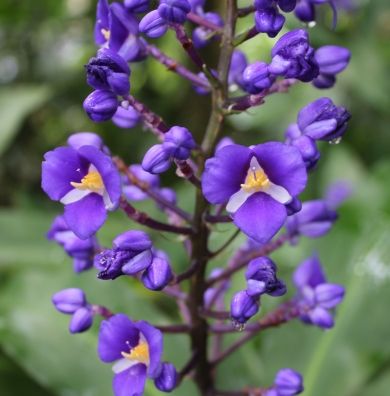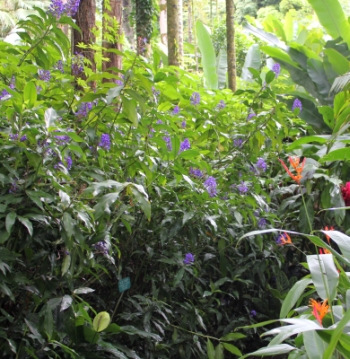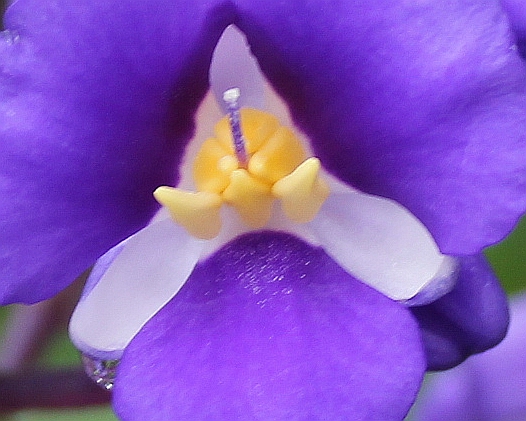
Actually, just a pop quiz.
Continuing the "flowers that look like Christmas ornaments" bit as started on our Facebook page…here’s another, as seen a couple of days ago in our visit to the conservatory at the Biltmore Estate, Ashevegas, N.C.

You can probably guess the family by the leaf shape.

Nice dangly peduncle, no?
Let’s have some guesses, temperate-zone readers! This had me stumped, and I’m not unfamiliar with tropicals. And yes, I want one.
(Zone 9-10 west-coasters: please sit on your hands for a bit, then you can tell us how common it is and "I pull this weedy thing out of my garden by the handful." Ha!!!)











